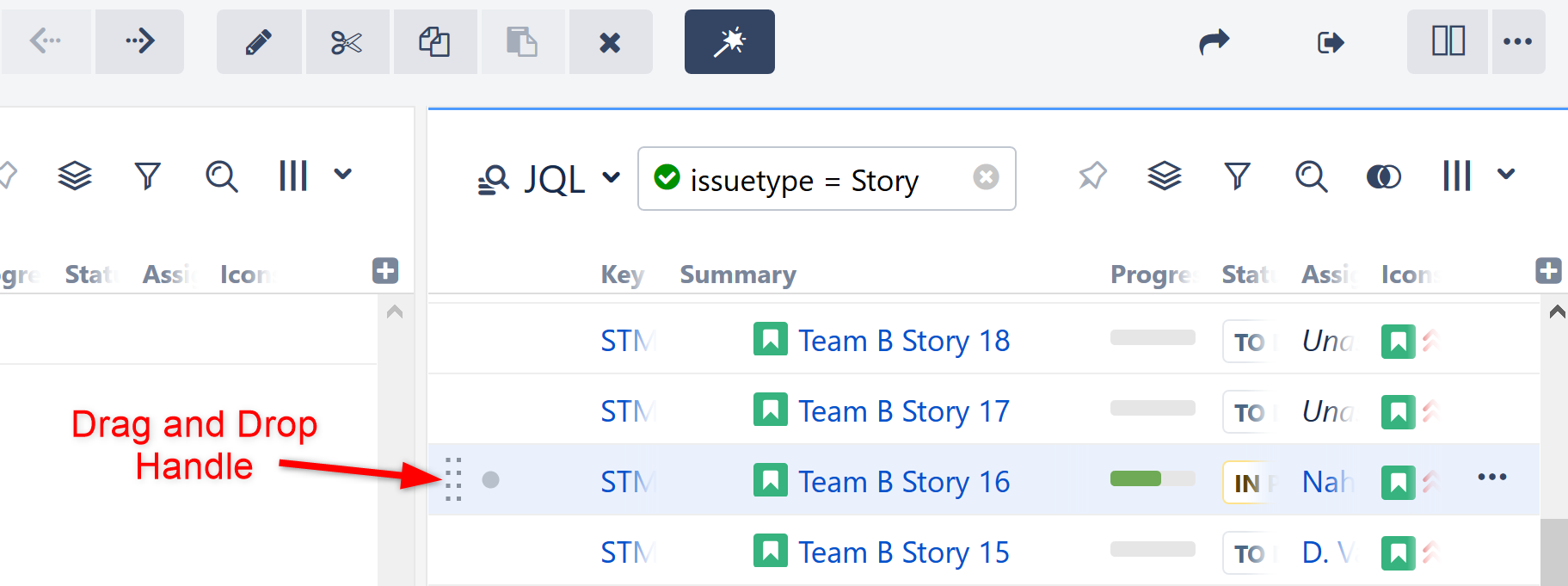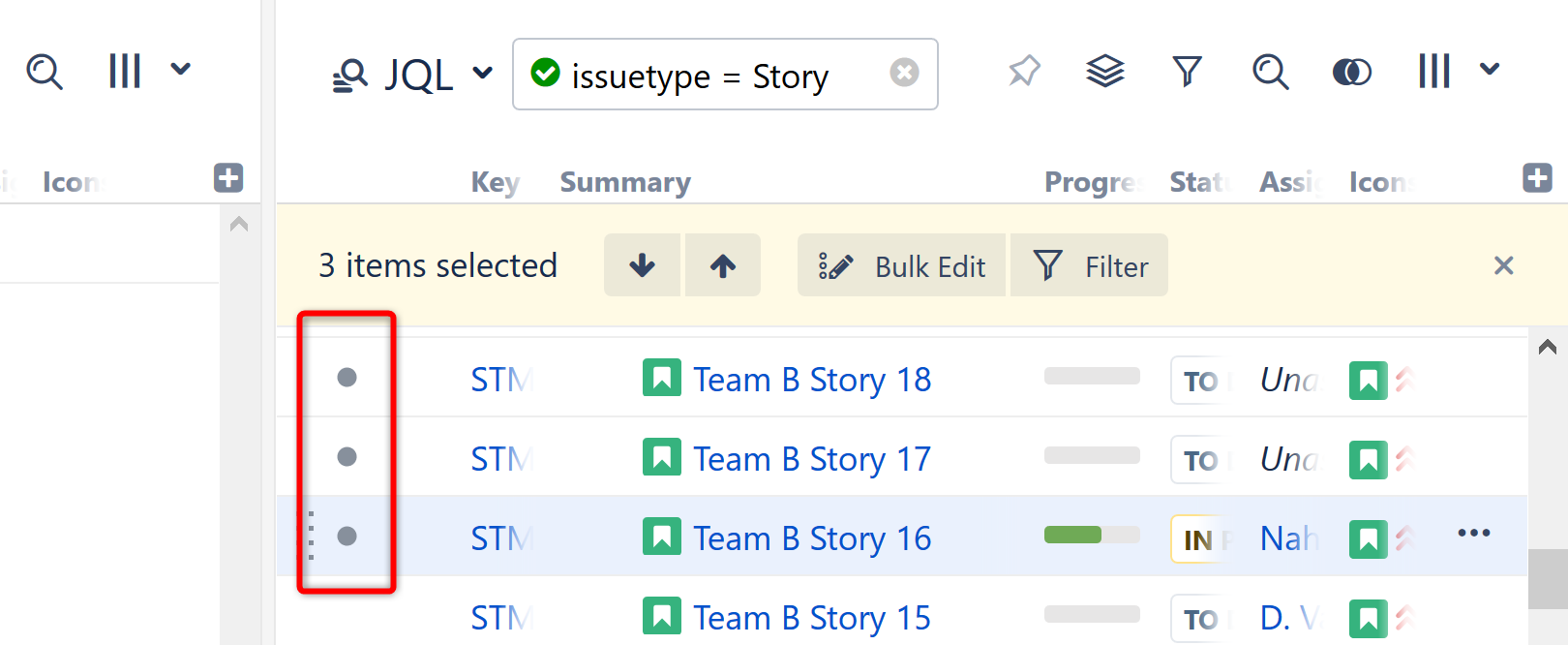Automation is a powerful method to build a structure based on rules you define, but it may not be enough for your project’s needs. If you need more options to organize and build your structure, you can build one manually.
When you add items to a structure manually, their position is stored within the Structure app itself. You can move issues and groups within your structure without affecting the issues in Jira.
Changes to issue properties in Structure are still reflected in Jira, regardless of how you build your structure.
Adding issues to your structure
-
To add issues to your structure, you can select Search & Add from the +Add menu, or you can select Double Grid from the Layout menu (…).
Either method will display a new panel on the right side of your structure.
-
In the JQL entry field, enter issuetype = Story. Visit our Adding Existing Issues article for additional methods to find and add issues to your structure.

-
Add issues to your structure:
-
Single issue: Hover over the item then use the handle to click and drag the issue to the left panel.

-
Multiple issues: Select the circle for each item you want to add, then drag them to the left panel using the handle for any of your selected items.

-
You can drag the same issue into your structure multiple times if needed. You can also hold Ctrl (Option on MacOS) while dragging an issue within a structure to copy it.
Next steps
After creating your structure, continue to Working with Structure to learn how to organize and manage your structure.
